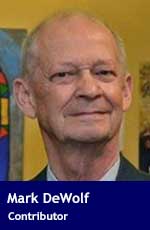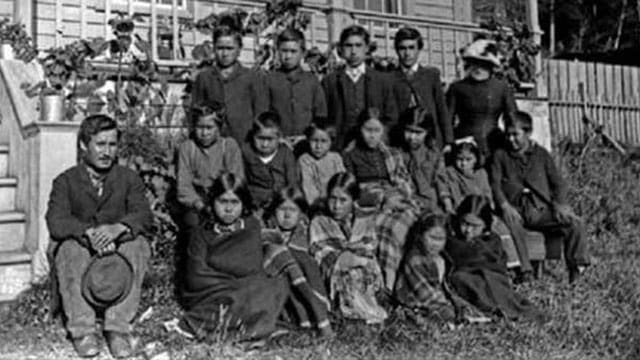 In November 2016, I attended a national gathering in Toronto organized by Indspire, a truly worthwhile national body that promotes and assists with the improvement of education quality and success among Indigenous youth.
In November 2016, I attended a national gathering in Toronto organized by Indspire, a truly worthwhile national body that promotes and assists with the improvement of education quality and success among Indigenous youth.
I was presenting a workshop on the value of bringing dramatic activities into classes such as math and science, to engage students in the learning process and more deeply imprint the lessons in their minds.
As I’d already given a workshop on another topic the previous year, my primary reason for applying to be a presenter in 2016 was to again meet and mingle with educators from across the country who were making Indigenous education a priority.
Such a desire was not too surprising, given that I’m a retired teacher who spent most of his childhood on a First Nations reserve, had a mother who was a teacher and a father who was the principal of the Indian Residential School that I attended from Grades 1 to 6. I’ve spent years looking into the subject of residential schools, and the 2016 conference was making residential schools and the recently released Truth and Reconciliation Commission report a focus of several workshop sessions. I wanted to know how those subjects would be dealt with in the context of educating today’s Indigenous youth.
The experience was a mixture of encouraging and even touching moments, and a disturbing amount of what can only be called “hooey.” That inaccurate, incomplete, misleading and downright dopey pronouncements should be trotted out in rooms full of sincere, dedicated, and truly decent teachers and administrators was at times dreadfully dispiriting.
Thankfully, there were enough truly good things that came out of the conference – a few kernels of new information here, a few perceptive comments there and a number of profitable conversations with individual attendees – to have made the trip from Halifax to Toronto very worthwhile.
First of all, the hooey. The etymology of the word is unknown, but it was apparently first used in 1912 to describe foolish talk or writing, and there was, I’m sorry to relate, a fair amount of that going around at the Toronto conference. First, there were the casual and frequent references to residential schools whenever the educational deficit among today’s Indigenous youth was mentioned, as if the low attendance and graduation rates we see have obviously been brought about by family members having been caught up in the Indian Residential School (IRS) system.
When Sen. Murray Sinclair – the event’s keynote speaker – pronounced that “Education got us into this mess, and education will get us out,” he was referring to the residential schools, and the crowd applauded with enthusiasm. His words immediately went viral on the Internet. There seemed to be an assumption that somehow, instead of putting in place the residential school system, the government of Canada should have done something else, but at no time did Sinclair or any other speaker touch upon what that “something else” should have been. A vision of how it could have been? Forget it. Indigenous leaders never suggest a less damaging alternative because there simply wasn’t one.
And there’s a very good reason for that. Even with the dozens of residential schools bringing together students from far-flung regions, fully a third of Indigenous children during the residential school period received no formal education at all. Building more day schools – and there were hundreds across the country, in areas where there were concentrations of non-nomadic Indigenous people – would not have been practicable. As it was, some newly-opened day schools – like the two that were attempted at Shubenacadie, N.S. – were forced to close due to poor attendance.
Without the residential schools and with no major increase in the number of federal day schools, what would have happened to the 70 percent of Indigenous children who didn’t have a day school nearby? They would have received only whatever native teachings their parents or elders would pass on to them – teachings that would have affirmed their Indigenous identity, possibly enriched their spiritual and cultural lives, and fitted them well for the traplines and the seal hunt.
But how would those children have fared as the years rolled by and another generation of unschooled children came along? How would they have even learned the language of the white man, the language of finance, commerce and the law, the language of the Indian Affairs Department?
In a century when the world was changing beyond recognition, those children would have been trapped as surely as any animal with its leg caught between steel jaws.
Many speakers at the conference stressed the need to prepare Indigenous youth for the job markets of today, oblivious to the fact that they were echoing the words of many Indian Affairs and church officials during the residential schools period. The desire to give Indigenous youth valuable employment opportunities was at least one of the main motivations behind the creation and operation of residential schools.
At first, the envisioned jobs for men were on farms, while girls received training that would equip them for domestic roles as wives, mothers and possibly servants. But as the nature of the country’s workforce shifted away from agricultural and basic trades, the curriculum of the residential schools changed, too, and the educational goal became – at the very least – graduation from high school. Sadly, residential schools often didn’t provide secondary education, and the older residential school students entered provincial public schools, where their particular needs were hardly ever acknowledged and where they dropped out in large numbers.
The lack of solid information about the residential school system displayed by those attending the conference was disturbing. No one to whom I asked the question, “What percentage of Indigenous children attended a residential school?” had any idea. No one could tell me the average length of enrolment across the system. While most were quick to say that the last school didn’t close until 1996, not a single person knew that institution was the Gordon School in Punichy, Sask., merely a student residence since the 1970s. No one I spoke to knew that, in the 1950s at least, parents signed application forms to send their children to residential schools, accompanied by doctors’ certificates, evidence that the parents wanted their children to attend the schools.
Looks of surprise met my assertion that when the schools were being phased out, a slim majority of native communities expressed a desire that their school remain open. Although every conference session began with a recognition that “we are on the land of the Mississauga of New Credit,” at one dinner table, none of my fellow diners knew that, in 2010, the Mississaugas gave up any ownership claim to the land Toronto sits on, in exchange for a payment of $145 million, distributed as $20,000 payments to each band member. When I explained that, my fellow diners looked shocked.
Significantly, several conference presenters pointed to works of fiction to bolster their claims about residential schools and the wider issue of colonization, often relying on the power of emotional storytelling to make a convincing case. At one session, I learned that an Ontario school board’s recently rolled-out curriculum on the topic of the residential schools included several fictional works for young readers that painted not only a very negative picture of life in residential schools but also a selective picture of the way Indigenous children ended up in one.
One session I attended – entitled The Role of Art, Activism and the Place in Education for Reconciliation – was a distillation of the hooey I’d observed elsewhere. Presented by a university professor from British Columbia, it was an hour of narcissistic evangelism on the importance of reconnecting with the spirit world through nature. A good deal of the 60 minutes was taken up with flute playing, and the two dozen people attending were asked to participate in a ritual that involved standing and silently turning to face meaningful directions while more flute playing went on. The polite acquiescence of the participants was typical of the very obvious disinclination I observed throughout the conference to criticize the proceedings, raise doubts or take contrary positions.
In short, the conference was long on rhetoric and passionately-delivered presentations, but generally lacking in useful information that educators could take back to their schools and communities.
That the conference participants were sincere and dedicated people, energized to tackle the formidable challenges that would face them when they returned home, there can be no doubt. But as the 2016 presidential race in the United States has shown, passion and rhetoric too often trumps a reliance on factual evidence and rational thought. As I came away from the conference, I wondered if a giant hoax, similar to the one played on American voters, was taking place right here. What kind of education, I wondered, will Canada’s Indigenous youth receive if their teachers are poorly-informed but fired-up evangelists for the current Indigenous narrative and its causes? I could see that a giant pep rally had its value, but I wished there had been more in the way of actual education of the educators.
Sinclair was certainly half right. Education is key if we’re serious about improving the lot of our Indigenous partners, either on reserves or in urban communities. And if the enthusiasm of the conference attendees is any indication, the educational opportunities given to Indigenous youth are in the hands of teachers far better prepared for their work than were the staff at the residential school I attended in the 1950s. Today’s teachers clearly recognize the importance of maintaining and encouraging native cultures, and they focus on the needs of individual students unlike their counterparts 40, 60 or 100 years ago.
But I fear that one form of propaganda – the British-derived lessons about brave explorers, hardy settlers and savage tribes – will be replaced with a similarly skewed narrative that’s politically correct in today’s Indigenous communities, one that’s increasingly accepted as gospel truth in the same way the material in my old social studies textbooks was blindly accepted by children in past decades.
The reluctance of Indigenous leaders and spokespersons like Sinclair to speak frankly to Canadians about the complexity and moral ambiguity of the residential schools doesn’t make one more prone to trust those leaders and spokespersons when they speak on other matters. Much was said at the Toronto conference about the need for reconciliation, but continuing to belabour the issue of residential schools while spreading a misleading impression about them doesn’t strike me as a wise course of action.
And I can’t help but recall the motto of St. Paul’s Indian Residential School, where I grew up and attended classes so many years ago: “Mokokit ki aekemat,” the Blackfoot way of saying “Gain wisdom and persevere.”
Mark DeWolf is a retired teacher living in Halifax, a former but non-Indigenous student at an Indian Residential School, and a research associate at the Frontier Centre for Public Policy.
Mark is a Troy Media contributor. Why aren’t you?
The views, opinions and positions expressed by columnists and contributors are the author’s alone. They do not inherently or expressly reflect the views, opinions and/or positions of our publication.


